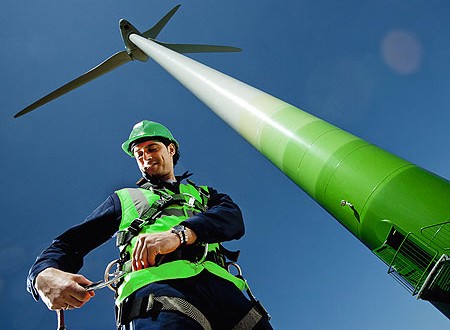Manufacturing Uses Up Huge Amounts of Energy. How are Metal Fabricators Improving their Energy Efficiency to Go Green?
Over the last few months, partly thanks to the COVID-19 pandemic, manufacturers have had to find new, more sustainable ways of working. As the industry starts to rebuild and grow, there is an opportunity for metal fabricators to reinforce their sustainability goals and work towards a greener future.
Research has shown that profitability and sustainability go hand in hand. Evidence suggests metal fabricators who put sustainability at the core of their business see huge benefits. In fact, 40% of metal fabricators reported increased profit margins as a result of going green.
Thanks to this, establishing a green work environment and utilizing energy conservation and renewable resources is now a high priority for many manufacturing companies. And it does not take the construction of a wind or solar farm for metal fabricators to become more energy efficient. Here are some of the ways metal fabricators are improving their energy efficiency to go green:
1. Efficient Production is Key

Business owners need to understand that energy efficient manufacturing not only saves energy and reduces costs, but it also reduces waste too. This is an area that can have a huge impact on the running of your business as it can impact all departments. Some of the efficient manufacturing and production techniques include areas like:
- Use of automation
- Better planning
- Improved data analysis
- Reduced energy and resource use
Going green can include everything from reducing the amount of paperwork to efficiently separating materials to be recycled.
2. Implement a Sustainable Business Program
For a few years now, manufacturing companies have been encouraged to implement a sustainable business program. Manufactures who do this:
- No longer focus on improving efficiency and cost-cutting – instead, they focus on increasing revenue and competitiveness.
- Address sustainability issues in their business
- Go beyond compliance by being innovative, analyzing their strategies, and scenario planning.
- Stop focusing on the short-term – instead, businesses should focus on their long-term goals
- Work with stakeholders and customers – working together can help us to reduce our combined carbon footprint.
- Implement sustainable processes in all areas of the business
3. Use Advanced Welding Methods
Evidence has shown that advanced welding methods require less heat and energy than traditional welding methods. Here are some of the advanced welding methods available:
- Friction – this welding process involves moving the materials that need to be joined in opposite directions. This process is much quicker than traditional processes and provides good strong results.
- Magnetic Arc Welding – in this process, a magnetic field moves the arc. This process is not only fast and accurate, but it also gives you a nice clean result.
- Explosive – this is another advanced welding method. In this method, explosives are used to join two materials together.
- Laser – lasers can be used for both welding and cutting. They are clean, quick, and efficient.
- Ultrasonic – in this method, high-frequency sound is used to create friction and heat. The friction and heat cause the materials to join together.
- Electron Beam – high-energy electrons are fired into a material which creates heat to join the pieces together.
One of the most significant parts of metal fabrication is welding. Making use of the above processes, not only saves money, time, and energy, but it also makes great sense too.
Green metal fabrication is the way of the future. While cost reduction is the main driver for implementing energy-efficiency measures, it is not the only benefit of going green. This is why so many companies are committed to implementing these principles into their operation.



